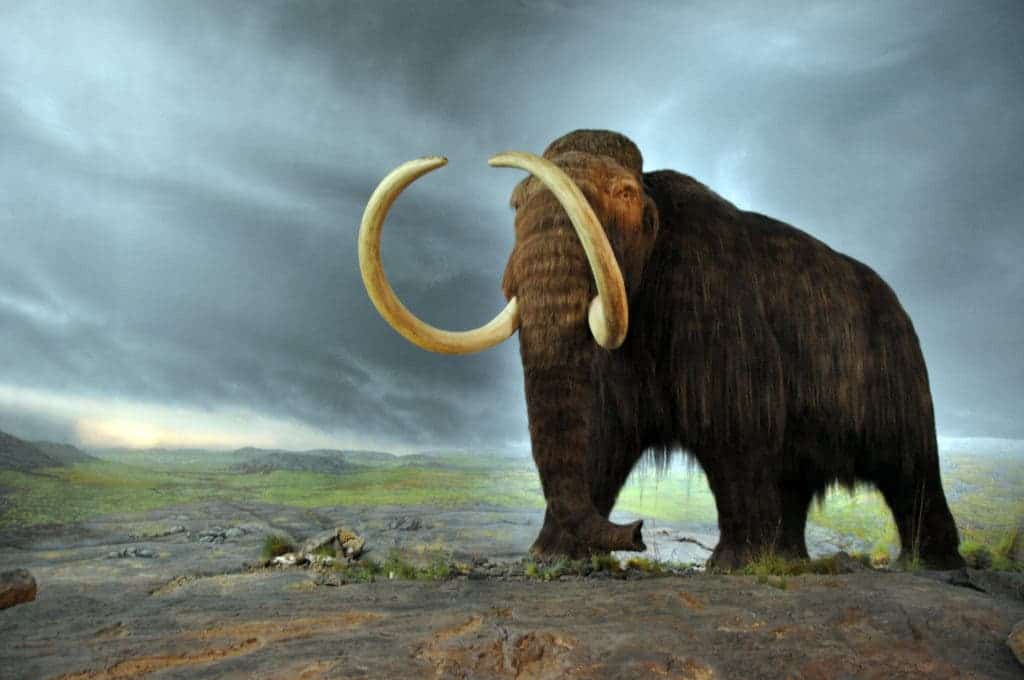The last woolly mammoths lived on Wrangel Island in the Arctic Ocean, a new study reports.

An international team of researchers with members from the Universities of Helsinki, the University of Tübingen, and the Russian Academy of Sciences reports that the wooly mammoths likely went extinct due to a combination of habitat isolation and extreme weather events — as well as the spread of ancient humans.
Within a very short timeframe some 4,000 years old, the last population of these animals — which lived on Wrangel Island — went extinct, they add.
Last of the mammoths
“It’s easy to imagine that the population, perhaps already weakened by genetic deterioration and drinking water quality issues could have succumbed after something like an extreme weather event,” says professor Hervé Bocherens from the Senckenberg Center for Human Evolution and Palaeoenvironment at the University of Tübingen, a co-author of the study.
Mammoths enjoyed great success during the last ice age, from around 100,000 to 15,000 years ago. The species ranged from Spain to Alaska and fared quite comfortably during that time. Around 15,000 years ago, however, temperatures started picking up, and the mammoths’ natural range started to shrink. The Wrangel Island population, the team notes, was cut off by rising sea levels from their mainland counterparts and would live in isolation for the next 7,000 years.
The team examined carbon, nitrogen, sulfur, and strontium isotopes from a large set of mammoth bones and teeth dug up from Northern Siberia, Alaska, the Yukon, and Wrangel Island. These specimens ranged in age from 40,000 to 4,000 years ago. The researchers aimed to document possible changes in the mammoths’ diets over this time (which would be ‘recorded’ in their bones as different isotope ratios) as proxies for the environmental disturbances the species was exposed to.
The results showed that the carbon and nitrogen isotope ratios in the collagen of Wrangel Island mammoths did not shift as the climate warmed up some 10,000 years ago. The values remained unchanged until the mammoths disappeared, seemingly from the midst of stable, favorable living conditions.
Such results show a stark contrast with those obtained from wooly mammoth bones in the Ukrainian-Russian plains, who died out 15,000 years ago. It’s also different from the mammoths of St. Paul Island in Alaska, who disappeared 5,600 years ago. In both cases, the last representatives of these populations (that we’ve found) show markedly-different isotope compositions, suggesting changes in their environment shortly before they became locally extinct.
Earlier research had shown that mammoths on Wrangel Island suffered certain mutations that affected their fat metabolism. In the present study, the team reports finding a different ratio of carbon isotopes in their bones compared to Siberian mammoths, likely due to a difference in the fat and carbohydrates in the diets of the two groups.
The bones of Wrangel Island mammoths also showed higher levels of sulfur and strontium, likely due to increased weathering of bedrock in the area close to the mammoths’ extinction. These elements likely found their way into rivers and streams, affecting the quality of the animals’ drinking water.
All in all, the mammoths of the island disappeared suddenly, but perhaps, not dramatically. The team says short-term events like extreme weather is what likely did them in in the end. A simple icing event can cover the ground in a thick enough layer of ice to prevent the animals from finding food — which is enough to cause a dramatic drop in numbers. Another possible reason is the spread of humans in the area, with the earliest evidence of their presence on the island preceding the last mammoth fossils by just a few hundred years. The chance of finding evidence that humans hunted Wrangel Island mammoths is very small, the team explains, yet a human contribution to the extinction cannot be ruled out.
The study shows just how fragile a small population of large mammals is to environmental shifts and human activity. The team says their findings can help preserve species by aiming conservation efforts at the populations that are not isolated from one another.
The paper “Thriving or surviving? The isotopic record of the Wrangel Island woolly mammoth population” has been published in the journal Quaternary Science Reviews.









